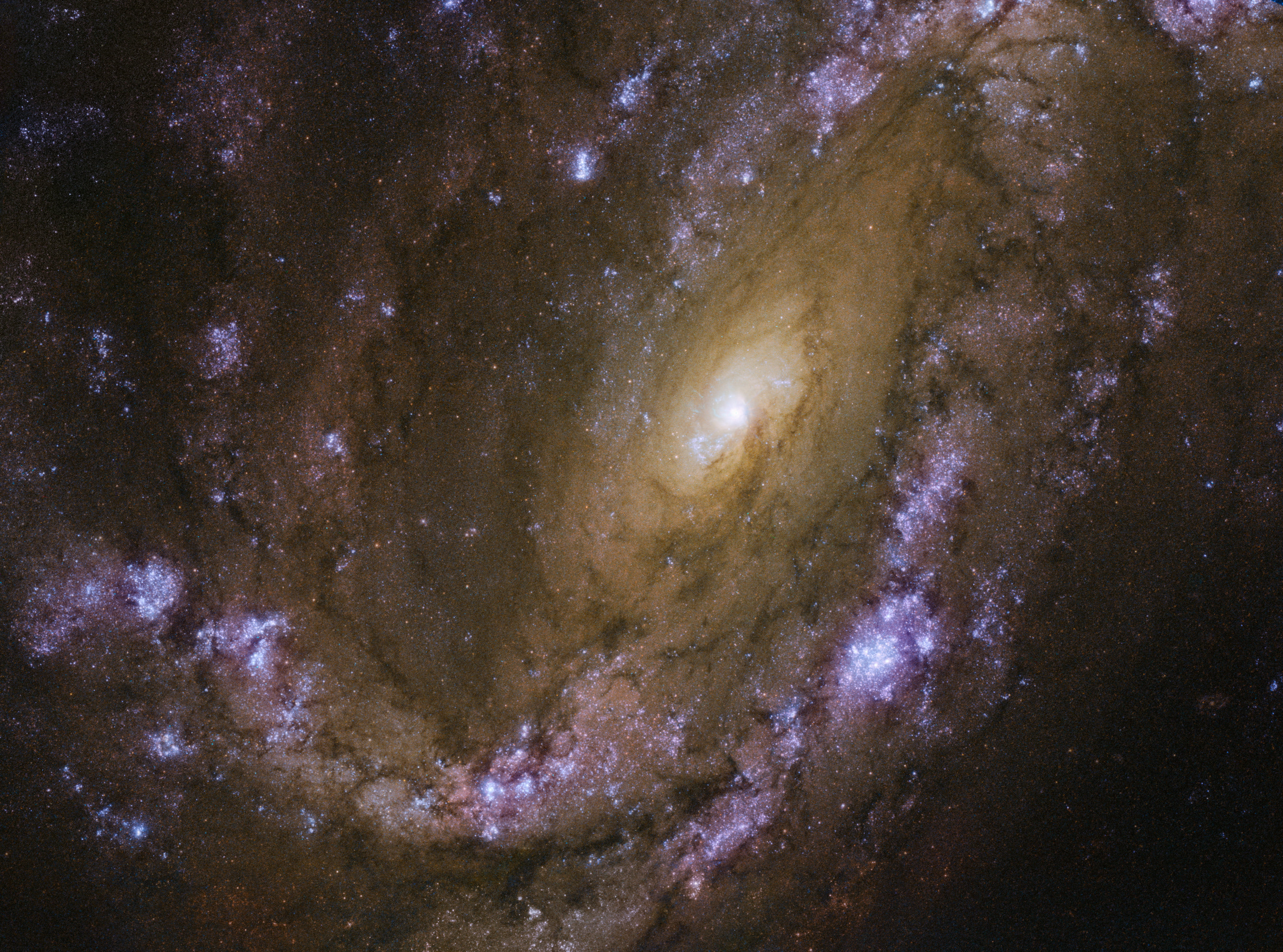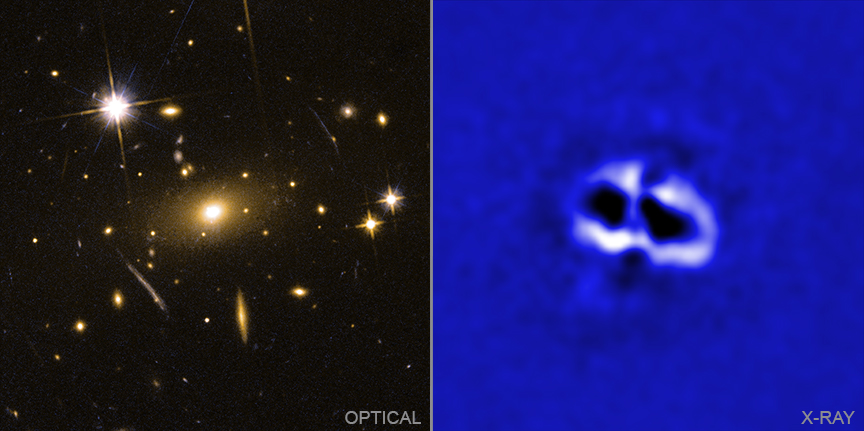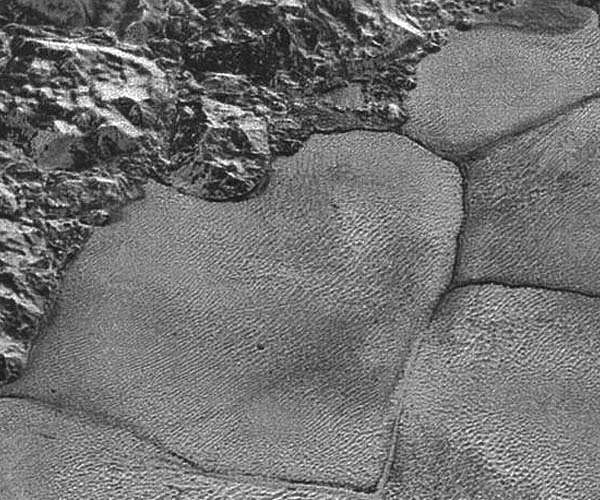New models of sublimating nitrogen show that the process creates enough heat to drive the formation and texture of the polygons in Sputnik Planitia. Plus, black holes, star formation, and an interview with Dr. Jonathan McDowell, orbital police.
Podcast
Show Notes
Algorithm find actively feeding black holes
- ICRAR press release
- “Deep Extragalactic VIsible Legacy Survey (DEVILS): identification of AGN through SED fitting and the evolution of the bolometric AGN luminosity function,” Jessica E Thorne et al., 2021 December 14, Monthly Notices of the Royal Astronomical Society
Black holes hollow out clusters
- CXO press release
- “The Deepest Chandra View of RBS 797: Evidence for Two Pairs of Equidistant X-ray Cavities,” F. Ubertosi et al., 2021 December 16, The Astrophysical Journal Letters
Molecular cloud bubbles signal star formation
- MPIA press release
- “A wind-blown bubble in the Central Molecular Zone cloud G0.253+0.016,” Jonathan D Henshaw et al., 2021 December 17, Monthly Notices of the Royal Astronomical Society
Sublimating nitrogen breaks Pluto’s ice
- CNRS press release
- University of Exeter press release
- “Sublimation-driven convection in Sputnik Planitia on Pluto,” Adrien Morison, Stéphane Labrosse and Gaël Choblet, 2021 December 15, Nature
Transcript
Hello and welcome to the Daily Space. I am your host Dr. Pamela Gay.
And I am your host Beth Johnson.
And we are here to put science in your brain.
Today, we are super pleased to have Dr. Jonathan McDowell as a guest. During work hours, Dr. McDowell is an astrophysicist at the Center for Astrophysics | Harvard & Smithsonian, and while that’s amazing, the real reason we have him here is that he is the “orbital police”. For decades, Dr. McDowell has tracked orbiting objects and helped plot out the orbits of random objects, including Elon Musk’s solar-orbiting Tesla. Before we get to that interview though, let’s take a look at the news.

In today’s first story, we have a headline that made me cringe. The good folks at the International Centre for Radio Astronomy Research put out a release titled, “Astronomers just got better at finding ‘bright’ black holes”.
Folks, black holes, by definition, emit no light and can not be bright.
That said, the headline “bright black holes” is way more click-worthy than “bright active galactic nuclei” and since every active galactic nucleus contains a black hole, we’re gonna cringe a bit and just move on with the story.
Deep in the hearts of some massive galaxies, disks of material can be seen spiraling in toward their central supermassive black hole. These disks can become hot enough and dense enough to glow brighter than the entire rest of the galaxy around them. In a paper in the Monthly Notices of the Royal Astronomical Society with first author Jessica Thorne, researchers describe a new image analysis algorithm that can take data from multiple telescopes, use fit models of the host galaxy and active black hole to match observations, and find out if an active black hole is needed to explain the observed light.
According to Thorne: We can identify these active black holes and look at how much light they’re emitting, but also measure the properties of the galaxy it is in at the same time. By doing both at once, we can have a better idea of exactly how the black hole is impacting its host galaxy.
This software can be used on existing catalogues, and the team is already directing their software at the GAMA and DEVILS surveys. This gives them upward of one million systems to search for active black holes and the glowing disks that surround them. We look forward to seeing what they find.

Annoyingly, some of the most impactful things in our universe just can’t be directly observed. Ignoring the giant pillars of dark matter and dark energy still leaves us with those same ‘don’t emit light’ black holes. Beyond affecting the evolution of the stars they may evolve with or the evolution of the galaxies they may sit in the heart of, it turns out supermassive black holes can hollow out the cores of galaxy clusters.
Researchers compared images from the Hubble Space Telescope, which shows us where stars and nebulae are located, with data from the Chandra X-ray Observatory, which shows the distribution of hot gas. Much to everyone’s surprise, the X-ray images showed massive cavities to either side of the cluster’s central galaxy and lesser cavities above and below.
In a new paper in The Astrophysical Journal Letters, researchers led by Francesco Ubertosi describe how this kind of a structure could be blown in the intra-cluster gas by a pair of actively feeding supermassive black holes with perpendicular jets. According to study co-author Myriam Gitti: While we think supermassive black holes can form binary systems, it is extremely rare that both of them are observed in an active phase — in this sense the discovery of two close active black holes inflating cavities in [this cluster] is extraordinary.
Along with the cavities seen in X-rays, additional data from the Very Large Array shows two pairs of jets aligned with the two sets of cavities. If the cavities and jets are from two supermassive black holes, they are the closest pair found so far. But before you go assuming that all these hoofprints indicate two horses are hanging out, there is a zebra we’d like to bring to your attention. It is possible, maybe, that one supermassive black hole could be responsible for this system all by itself if it somehow flipped rapidly. How you rapidly rotate an object many million solar masses in size, well, that’s a problem for theorists. For now, just know that apparently the jets associated with supermassive black holes can blow epic bubbles.

A lot of structures in our universe are the result of jets, collisions, and shockwaves. This leads to areas of compressed material, and this compressed material can be the perfect place for stars to form. Enter molecular cloud G0.253+0.016, aka “The Brick”.
This particular chunk of dense material lurks toward the core of our galaxy and generally appears as a dark blob against the bright glow of the Milky Way’s Central Molecular Zone. Initial observations showed no star formation, but researcher Jonathan Henshaw remarks: When investigating the gas motion of the Brick, we find one component that stands out. That sub-structure, confined to a narrow range of velocities, resembles a crescent-shaped arc.
And in astronomy, when you see an arc, it often means something is blowing a bubble.
After measuring motions in the bubble, the team worked backwards to figure out how long it had been growing and came up with a few hundred thousand years. In the lifetime of a star, that is the blink of an eye. Henshaw further explains: We explored several plausible scenarios that may account for an expanding envelope forming the arc. Comparing predictions from theory to our observations, we found that the stellar wind from a massive star of about 20 solar masses is likely the dominant mechanism.
Stars don’t form in isolation, and these observations hint at a star cluster coming into being in this Brick of a cloud. What today appears as a dark smudge will someday shine with the light of hundreds of stars. If the JWST launches, its long-wavelength capabilities may let us peer into the dust and watch this new system being born. If…
In the latest JWST news, the presser to talk about when it will be launched was delayed. Yes folks, the info on when the delayed telescope will be launched has also been delayed.

Back in 2015, the New Horizons space craft showed us that Pluto looks nothing like anyone imagined. The most iconic feature of this distant world is a heart-shaped plane named Sputnik Planitia. This feature, like Texas, is slightly bigger than France. Looked at closely, Pluto’s heart is made of polygons of nitrogen ice. This shape is generally associated with convection but explaining how an icy plane convects like oil in a hot pan has been a challenge.
Researcher Adrien Morrison explains: We know that the surface of the ice exhibits remarkable polygonal features – formed by thermal convection in the nitrogen ice, constantly organizing and renewing the surface of the ice. However, there remained questions behind just how this process could occur.
Based on a lack of craters, Sputnik Planitia appears to be about 40,000 years old. To put that in perspective, neanderthals had just gone extinct and homo sapiens were settling Australia when this giant crater was formed. This means that we aren’t seeing the legacy of some ancient convection; we are seeing a modern process shaping a geologically active world.
That’s another thing that wasn’t expected: we didn’t think Pluto would be geologically active. It is too tiny to have held on to much internal heat left over from its formation, and it takes heat to drive activity. As put by Morison: [New Horizons] showed that Pluto is still geologically active despite being far away from the Sun and having limited internal energy sources. This included at Sputnik Planitia, where the surface conditions allow the gaseous nitrogen in its atmosphere to coexist with solid nitrogen.
Over the past half-decade, folks have put forward a lot of possibilities, including tidal heating from Charon, a core rich in radiative materials, and residual heat from impacts like the one that formed the plane in question. But these explanations may not be necessary.
In a new paper in Nature, Morison points out that models show the ability of nitrogen to go from solid to gas as it sublimates at Pluto may be enough to drive the convection. Numerical models based on sublimation are able to reproduce the New Horizons observations, including the size of the polygons, their topography, and even the surface velocities.
Nitrogen – it alone may be able to explain at least this one heart-shaped mystery of Pluto.
Since flying past Pluto in 2015, New Horizons has continued its journey outwards, and in April, it passed the 50 AU mark, putting it fifty times the distance of the Earth from the Sun. New Horizons’ mission is not yet over, and there is enough fuel and power remaining for the little spacecraft to visit at least one more target if one can just be found. The New Horizons team used the Subaru Telescope to search for targets last May. If that data provides no targets, all hope is not lost. The Vera Rubin Observatory offers new promise, and since it is on the ground, we know it will be completed and functional in the not-too-distant future.
Interview
Joining us now is Dr. Jonathon McDowell. McDowell is an astrophysicist at the Center for Astrophysics | Harvard and Smithsonian by day, but on Twitter, he is known as planet4589, and he is also the orbital police. Thank you for joining us today, Dr. McDowell, and welcome.
[Transcript unavailable.]
This has been the Daily Space.
You can find more information on all our stories, including images, at DailySpace.org. As always, we’re here thanks to the donations of people like you. If you like our content, please consider joining our Patreon at Patreon.com/CosmoQuestX.
Credits
Written by Pamela Gay and Beth Johnson
Hosted by Pamela Gay and Beth Johnson
Audio and Video Editing by Ally Pelphrey
Content Editing by Beth Johnson
Intro and Outro music by Kevin MacLeod, https://incompetech.com/music/


 We record most shows live, on Twitch. Follow us today to get alerts when we go live.
We record most shows live, on Twitch. Follow us today to get alerts when we go live.